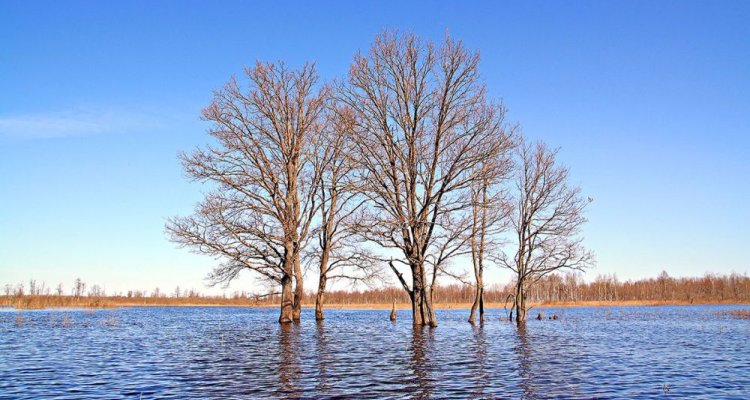
Consequences of climate change
Since the onset of the Industrial Revolution the average world temperature has risen by about 0.8 degrees Celsius. In North-West Europe (including the Netherlands) the average temperature has risen by 1.5 degrees. Time and again, heat records are broken. The year 2010 ranked worldwide as one of the three hottest years since records began in 1854, despite the bitterly cold winter in the Netherlands.
Climate change may have profound effects, but predicting them is far from easy. We will see more extreme weather conditions in the future.
Normally, in the Netherlands rainfall is heavier and more frequent in summer. Climate change will probably reduce the number of rainy days in summer. And because more water evaporates in summer we will have to deal with a higher incidence of drought. In winter it rains more heavily and more often, thereby increasing the risk of flooding.
At the same time, sea levels are rising, partly because seawater expands when it heats up, but also because the ice sheets on land are melting and – to a lesser extent – because glaciers are disappearing.
Vulnerable
More than half of the world’s population lives in areas susceptible to the effects of climate change. The Netherlands, as a country, is also in a vulnerable situation. At present the effects are contained, but the long-term consequences are difficult to gauge. The Netherlands does, however, have the means at its disposal to protect itself from rising water levels for a long time.
Climate change also has major implications for islands and for countries with long coastlines, such as Bangladesh, which does not have sufficient resources to withstand the effects.
Climate change affects nature and wildlife. Winters are shorter and the growth season is longer. According to data from Nature’s Calendar, in the past ten years the growth season has lasted, on average, a month longer than in the previous century. So, there is virtually no doubt that nature is changing along with the climate. The warmer weather is causing plants and wildlife to move their habitat towards polar and mountainous regions. Meantime, species from more southern climates are heading towards the Netherlands. Birds and mammals are reasonably good at adapting provided their habitat is not too fragmented, but some plants, butterflies, amphibians, reptiles, locusts and grasshoppers are finding it increasingly difficult to keep pace with the changing climate. This will get worse if the speed of climate change increases.
Uncertainties climate change
We do not know how fast the climate is changing or the exact consequences. There are still many uncertainties and we may have to brace ourselves for surprises: processes that suddenly speed up climate change. The effects will be mitigated to some extent if we can adapt more effectively. Also, we have no idea how successful we will be in reducing global CO2 emissions.